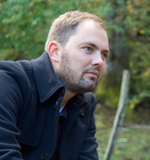The Great Green Wall is a beautiful idea. Planting trees and re-greening the Sahel across the entire width of Africa would be invaluable. According to the UN, would sequester 250 million tonnes of carbon while creating 10 million jobs.
But despite significant funding, little progress has been made. The lofty objective of restoring 100 million hectares by 2030, spanning 8000 km across the continent, is woefully off target.
Last week at the #OnePlanetSummit in Paris, France’s President Emmanuel Macron announced a pledge of over $14 billion to accelerate the Great Green Wall. But big sums and moving promises are not enough. We need action. We need accountability and we need measurable results.
Ecosia can help turn words into action. Together with our partners, we’ve already restored 35,000 hectares in Burkina Faso, Senegal, Mali and Ethiopia. We've learned how to do it. We know the challenges we’re up against. We know how important it is to work with local communities, how to ensure the trees’ survival, and how to monitor the trees using satellite tech.
So here’s our proposition to the world leaders at the One Planet Summit: together with our local partners and communities, and the right support and funding, we could plant 1 billion trees, and use our reporting and remote sensing technology to monitor the progress of the entire Great Green Wall.
When done well, reforestation efforts in the region provide benefits that stretch far beyond environmental. With agriculture a primary source of revenue in the area, our tree-planting program not only improves soil quality and nutrition, but also creates employment for local communities. It also helps to cool the climate, encourage greater rainfall, and support local wildlife including hyenas, land turtles, and migratory birds.
However, tree-planting in the Sahel faces many challenges. Burkina Faso, for example, has been experiencing conflict and violence, and many parts of the region remain in a state of emergency. The COVID-19 pandemic has added a strain to the country’s fragile health systems, and has restricted agricultural commerce. Temperatures are rising 1.5 times faster than the global average, and the desert is edging into shrubland.
“Restoring degraded land in the Sahel is extremely challenging. Every year, Africa loses millions of hectares of fertile land to climate change and bad land management - in Burkina Faso alone, an estimated 450,000 hectares are lost per year. To restore this, we need a huge executional capacity that is diverse, efficient, transparent and anchored. Landscape restoration requires not only tree planting, but is first and foremost a social and economic change. For the last couple of years, we, in partnership with Ecosia, have developed this diverse capacity and packaged it into a scalable program - all with the local communities as our main partners. With the support of national infrastructure - in terms of policy and security - we trust we will be able to scale up this capacity to to 1 billion trees and beyond.”
Yves Savadogo, Country Manager of Hommes et Terre
Our work in Burkina Faso has already been expanded into neighboring Mali through the work of Hommes et Terre. This year, the project will also begin working in Senegal, another Great Green Wall target country, with a further 4,000 hectares and three million trees contracted.
We’ve also been running a forest garden program in Senegal with Trees for Future since 2018, helping establish over 300 family forest gardens. Ethiopia, another Great Green Wall priority country, has been a part of our tree planting activities since 2017. Over the past four years, partnerships and funding for local women's groups through Ecosia’s partners such as Foundation Green Ethiopia and Menschen für Menschen have led to the tracked and monitored restoration of almost 10 million trees.
Can Ecosia grow 1 billion trees for the Great Green Wall? We can’t do it alone — but with some of the funding that was announced last week, our partner organizations and their expertise, and with the essential help and support of local communities, we’re confident that we can contribute significantly to the Great Green Wall, and monitor the entire project. That’s not an empty promise. There are millions of trees to back us up.
